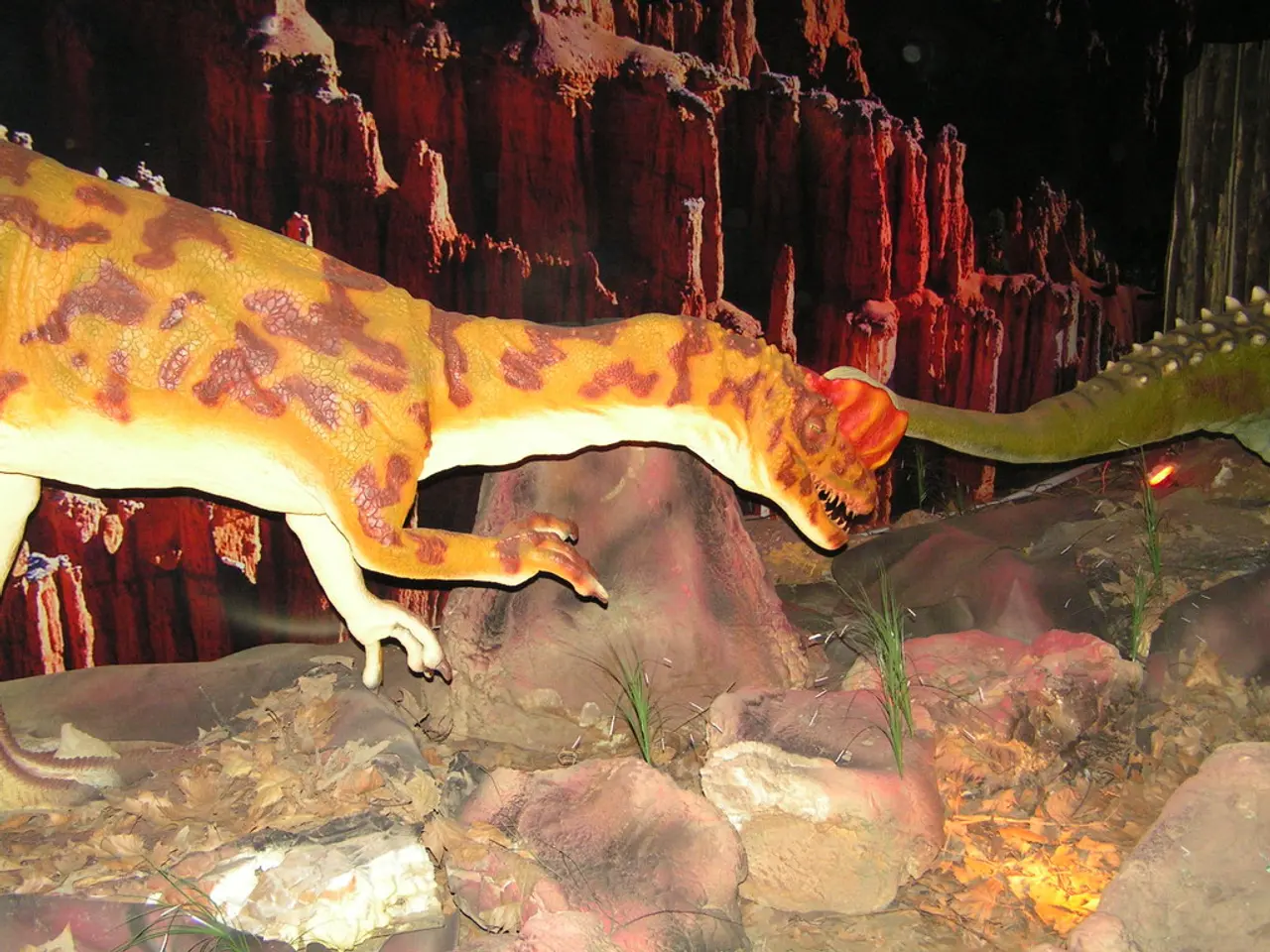Discovered Dinosaur from 95 Million Years Ago in Argentina: Introducing Astigmasaura Genuflexa
In the vast expanse of Patagonia, Argentina, researchers have discovered a new species of sauropod that sheds light on the evolutionary history of these colossal dinosaurs. The fossilized remains of Astigmasaura genuflexa were found in the Huincul Formation of the Neuquén Basin, dating back approximately 95 million years to the Late Cretaceous period.
Astigmasaura genuflexa is a member of the Rebbachisauridae family, a group of medium to large-bodied, ground-level browsing sauropods known for their specialized skulls, extensively pneumatized axial skeletons, and gracile limb bones. This new discovery exhibits a unique combination of morphological features in the caudal (tail) and pelvic girdle anatomy, offering insights into the taxonomic and anatomical diversification of Rebbachisauridae during their final evolutionary stages.
The specimen, an articulated, adult postcranial skeleton, offers new morphological information about the species. Notably, Astigmasaura genuflexa has anterior caudal vertebrae with tall neural spines and tetraradiate neural laminae, a feature not commonly observed in other sauropod species. The femur of this sauropod displays medially inclined distal condyles, setting it apart from other sauropods in the Rebbachisauridae family.
The discovery of Astigmasaura genuflexa enriches the fossil record of rebbachisaurids, contributing to our understanding of sauropod evolution in South America. Patagonia, it seems, was a particularly rich center for rebbachisaurid fossils, yielding over half of all known specimens from this family. This finding has broader implications for reconstructing sauropod biogeography and diversity on the ancient supercontinent Gondwana, underscoring complex evolutionary pathways and possible ecological specializations during the Late Cretaceous.
The original study about Astigmasaura genuflexa was published on ScienceDirect, offering a comprehensive analysis of the new species. The Rebbachisaurid family's fossil record extends from the Early Cretaceous to the early Late Cretaceous, and this discovery fills a critical gap in the understanding of sauropod evolution in South America.
In conclusion, Astigmasaura genuflexa expands the morphological and taxonomic scope of Rebbachisauridae, sheds new light on sauropod diversity and adaptation in Gondwana, particularly Patagonia, and helps clarify evolutionary trends in sauropods leading up to their decline in South America during the Late Cretaceous. This new species offers a captivating glimpse into the rich and complex world of dinosaurs that once roamed the Earth.
- The fossil of Astigmasaura genuflexa was found in the El Orejano locality of the Huincul Formation.
- Astigmasaura genuflexa measured about 18 meters (59 feet) in length and weighed over 10 tons.
- Astigmasaura genuflexa has asymmetric middle haemal arches and mediolaterally compressed proximal tibiae.
- Astigmasaura genuflexa lived during the Late Cretaceous period, when sauropods were one of the dominant herbivorous groups on Earth.
- The species Astigmasaura genuflexa was discovered in Patagonia, Argentina.
- Astigmasaura genuflexa is a previously unknown species of rebbachisaurid sauropod.
- The discovery of Astigmasaura genuflexa offers insights into sauropod evolution during the Late Cretaceous period.
- The discovery of Astigmasaura genuflexa further enhances our understanding of Rebbachisauridae evolution in Patagonia.
- The partial, articulated postcranial skeleton of a single, morphologically adult individual of Astigmasaura was found.
- The fossil provides new morphological information about the caudal and pelvic girdle anatomy of Rebbachisauridae.
- This new species, Astigmasaura genuflexa, discovered in Patagonia, Argentina, contributes to the study of environmental science by providing insights into the evolution and adaptation of sauropods during the Late Cretaceous period, a critical era in the history of life on Earth.
- The fascinating discovery of Astigmasaura genuflexa offers valuable contributions to medical-conditions, health-and-wellness, and space-and-astronomy, as understanding sauropod fossils can help us better understand potential and present biological structures and their adaptability to different environments.




